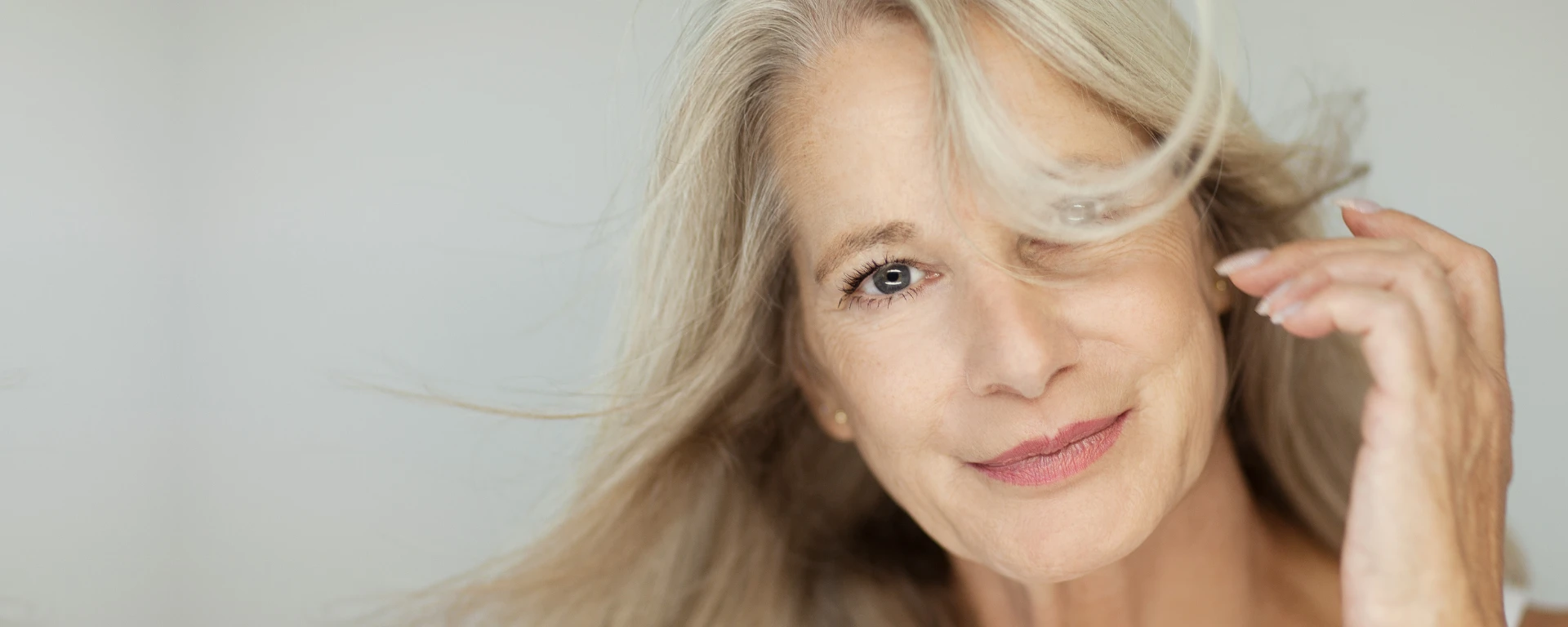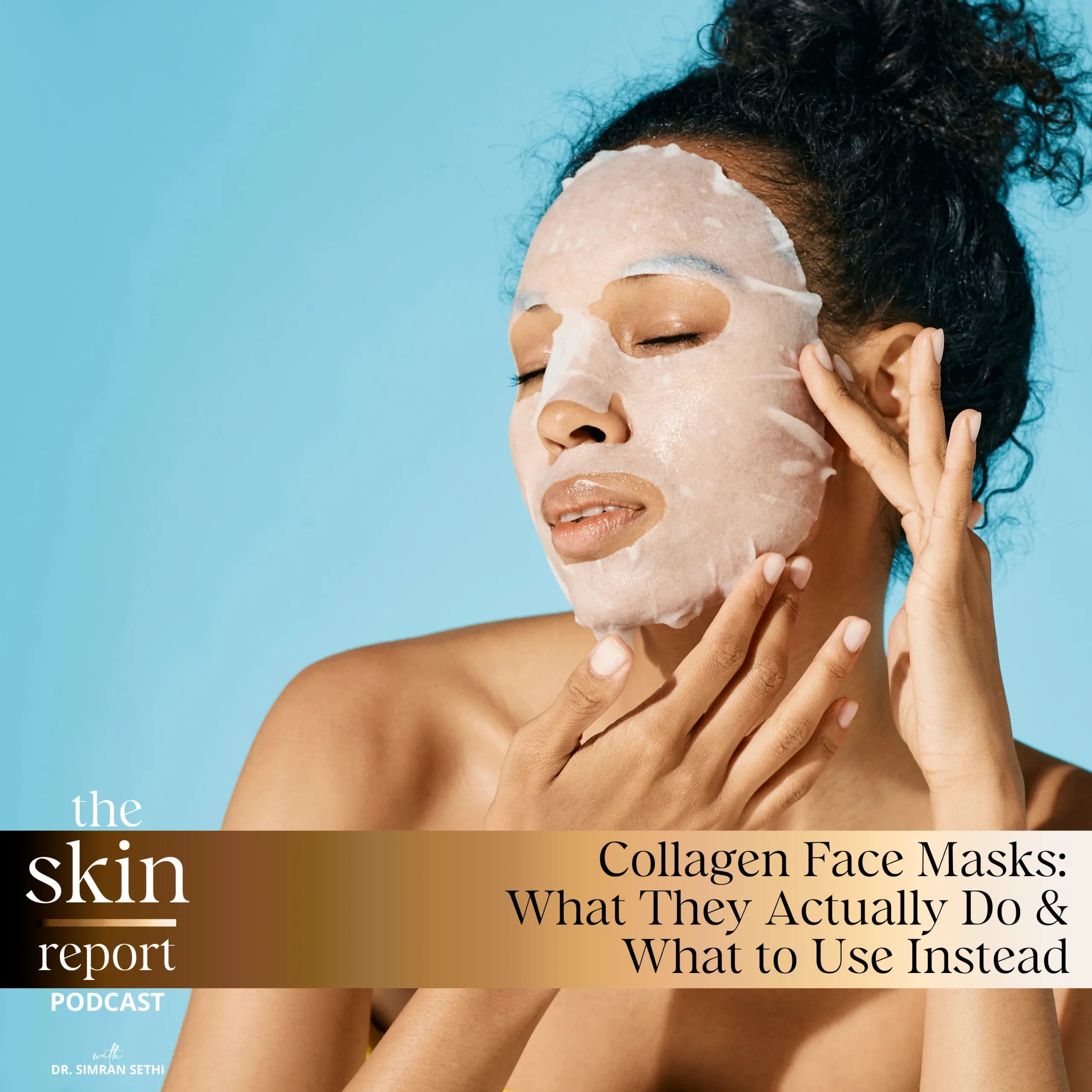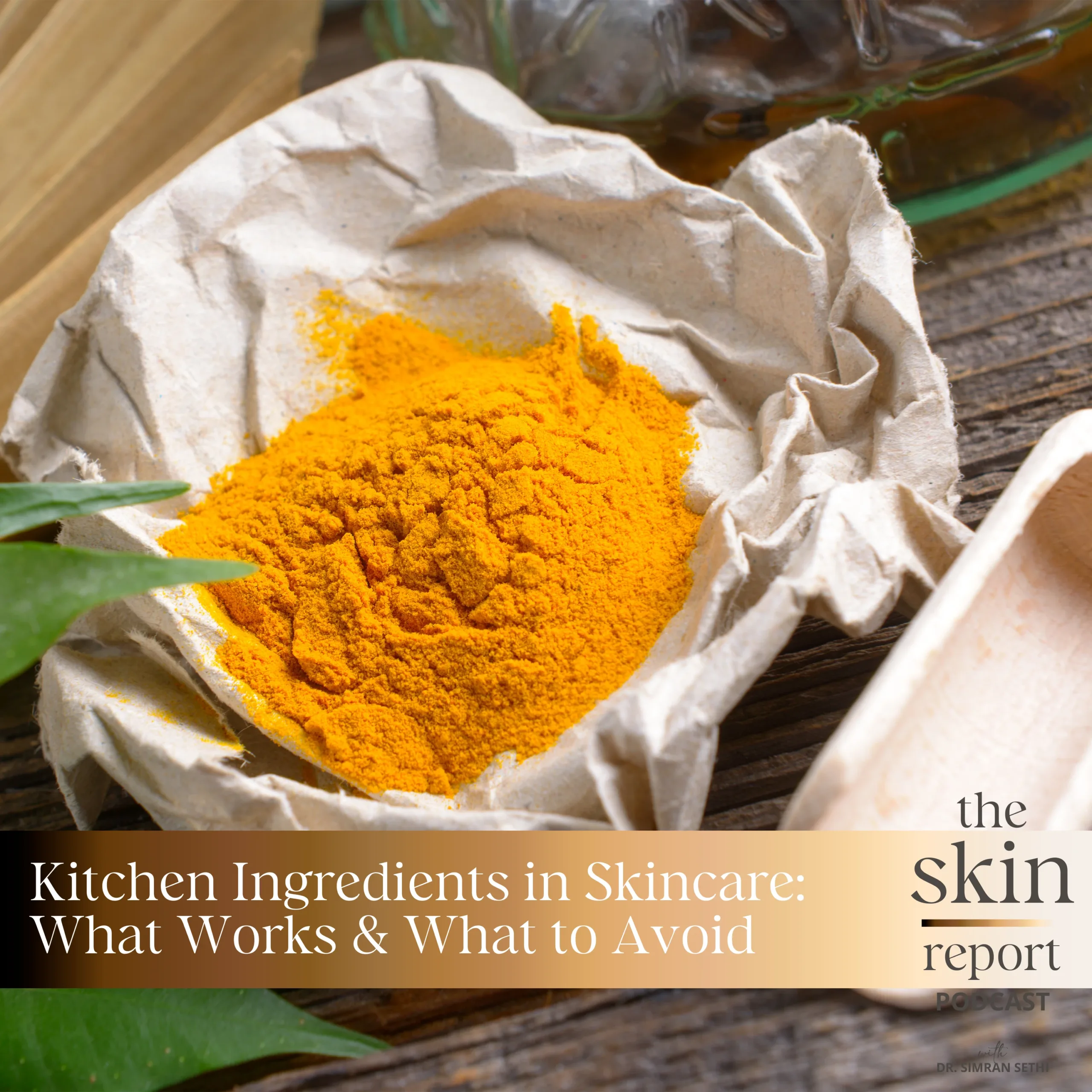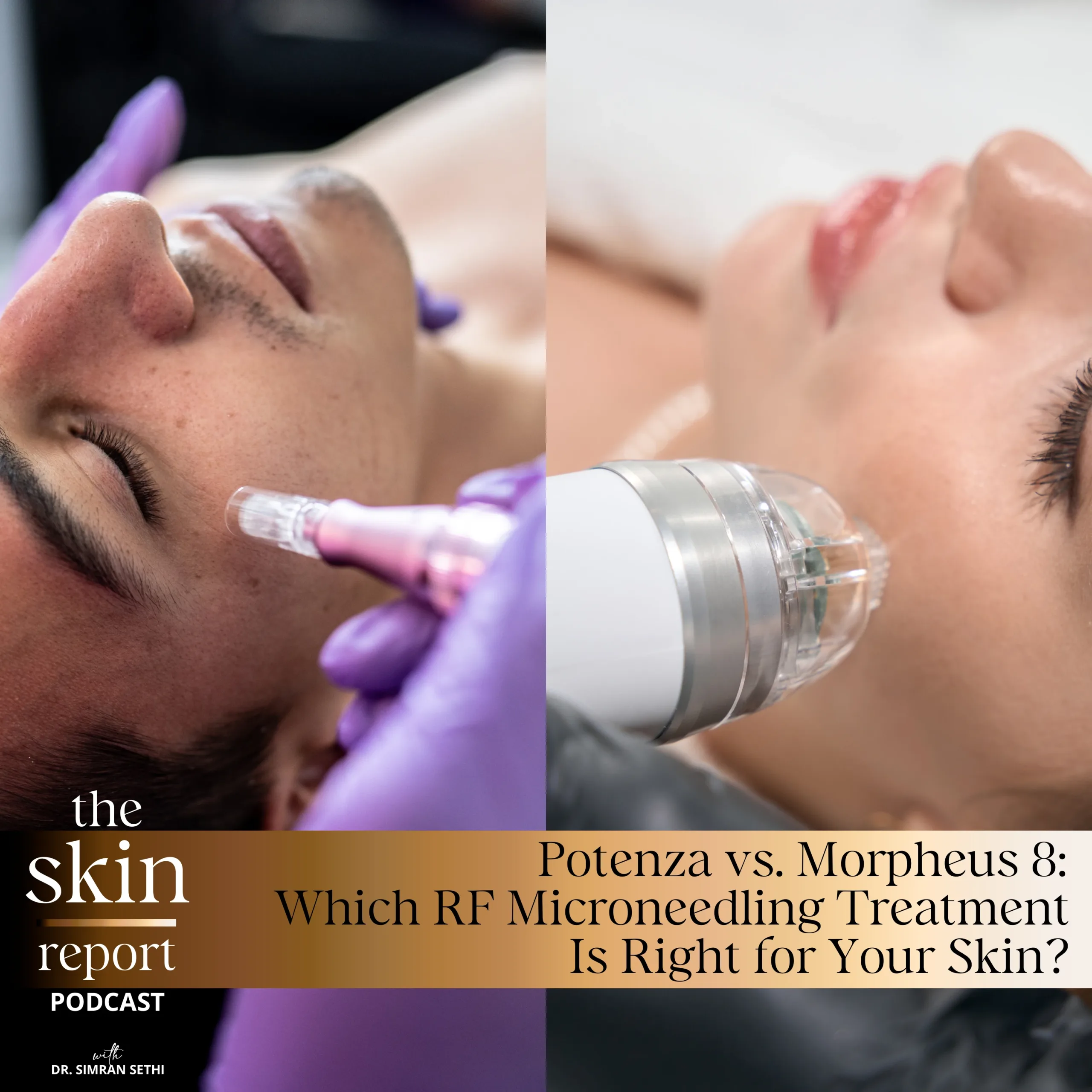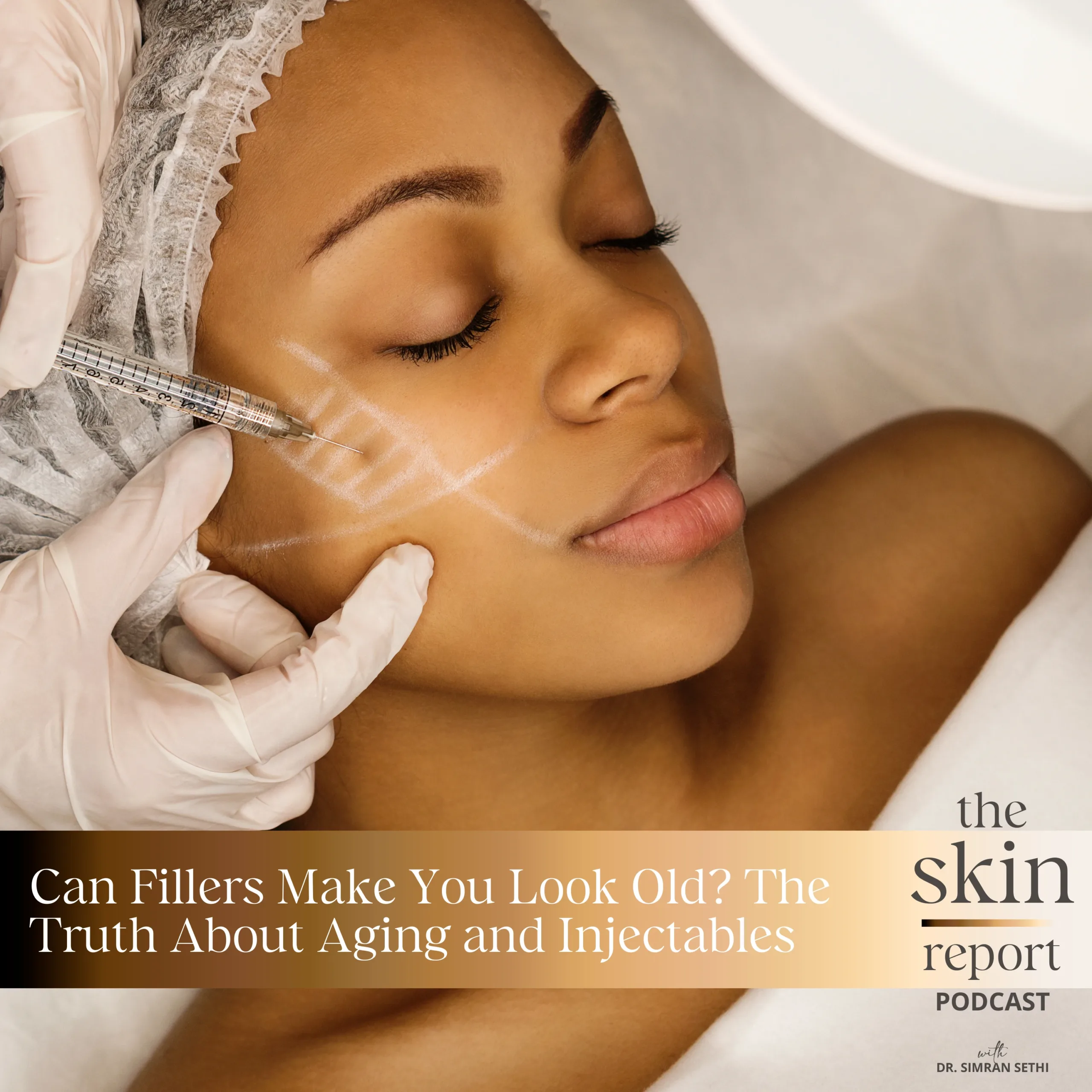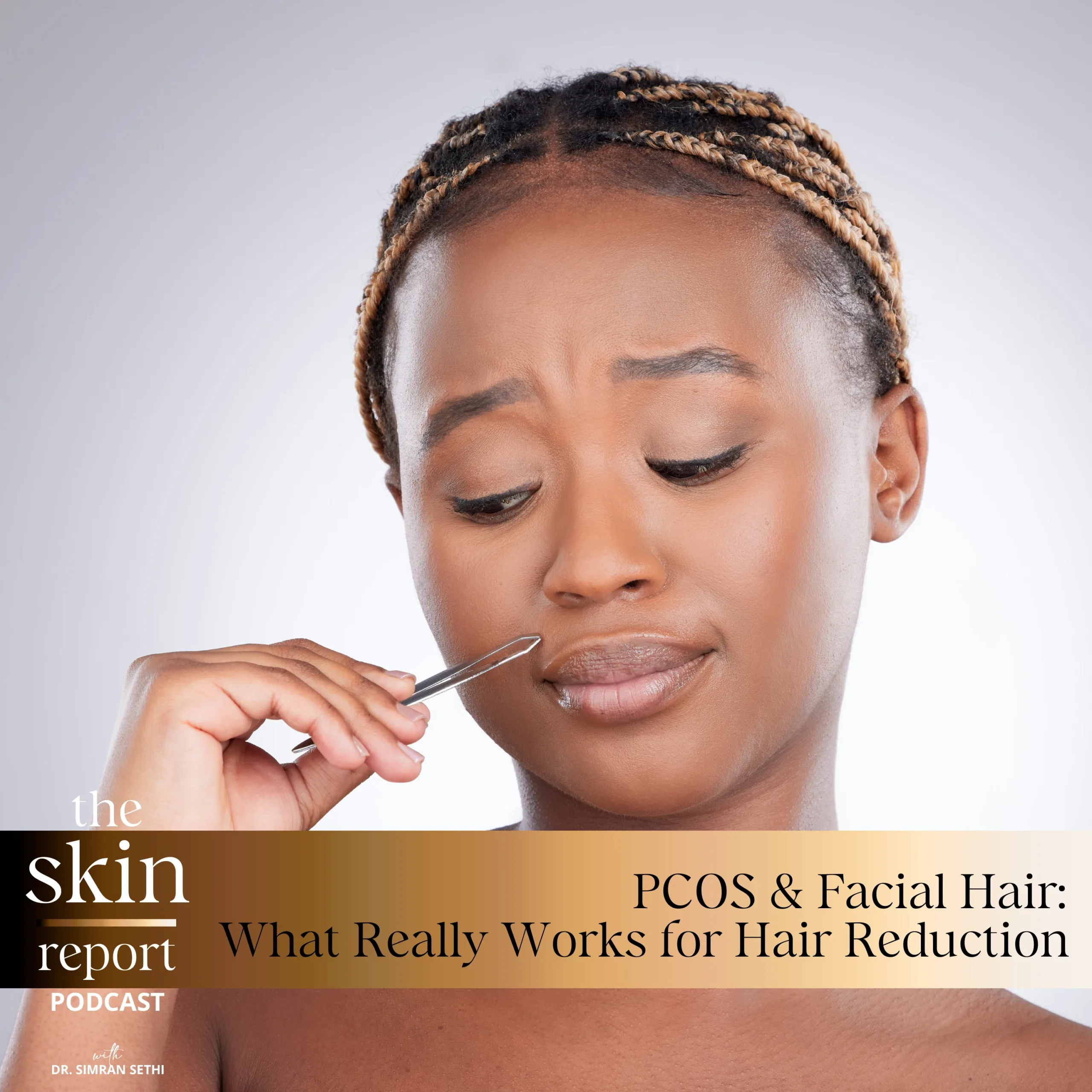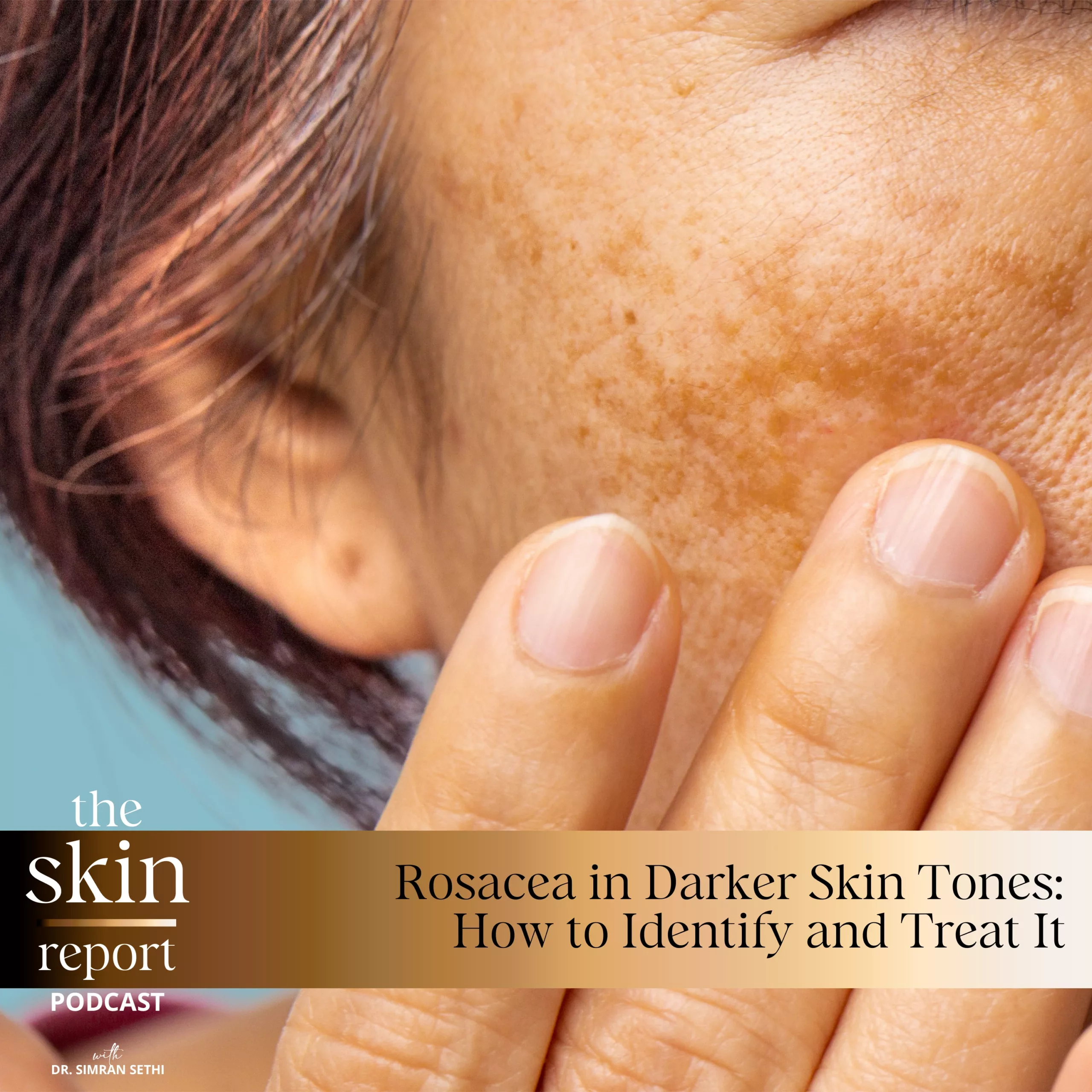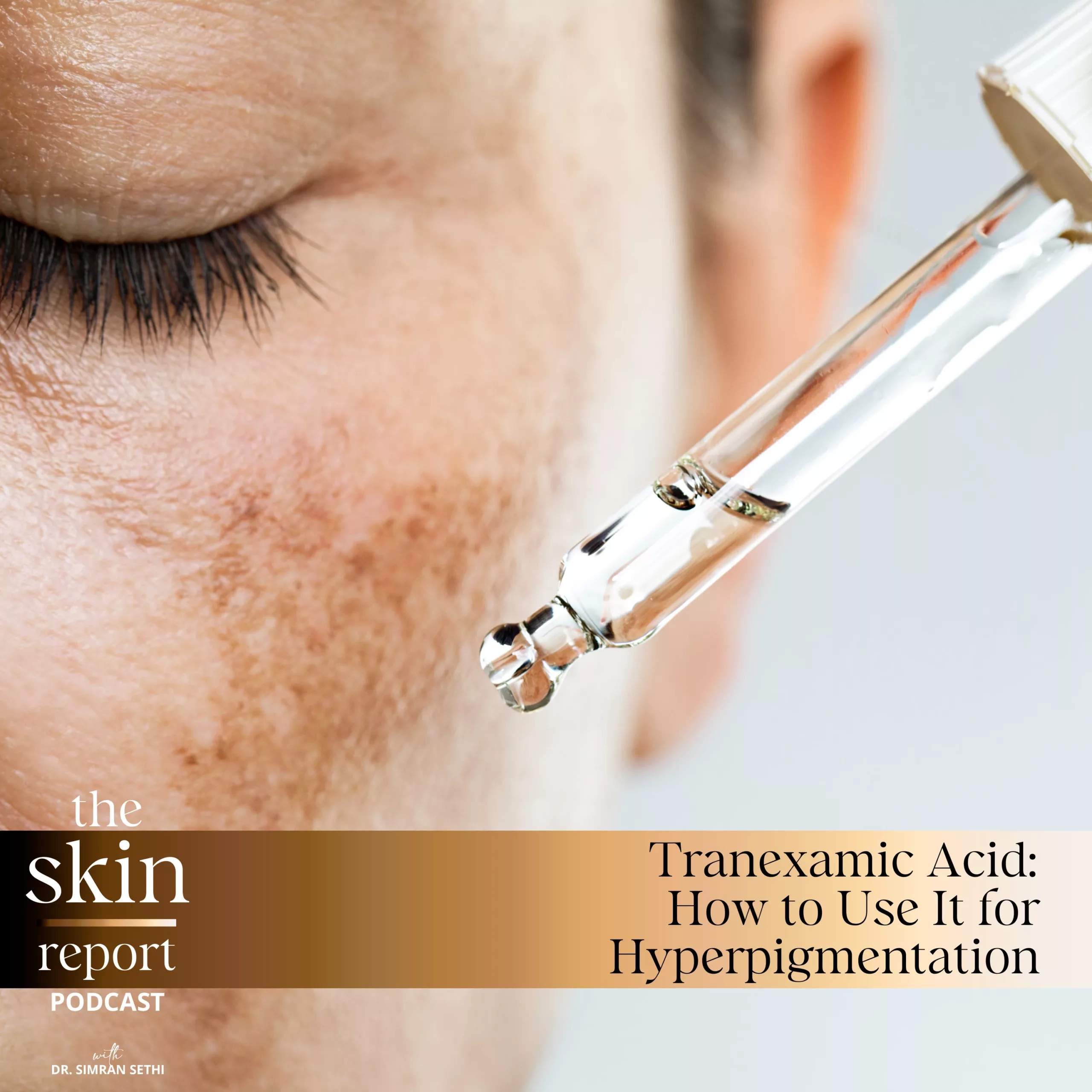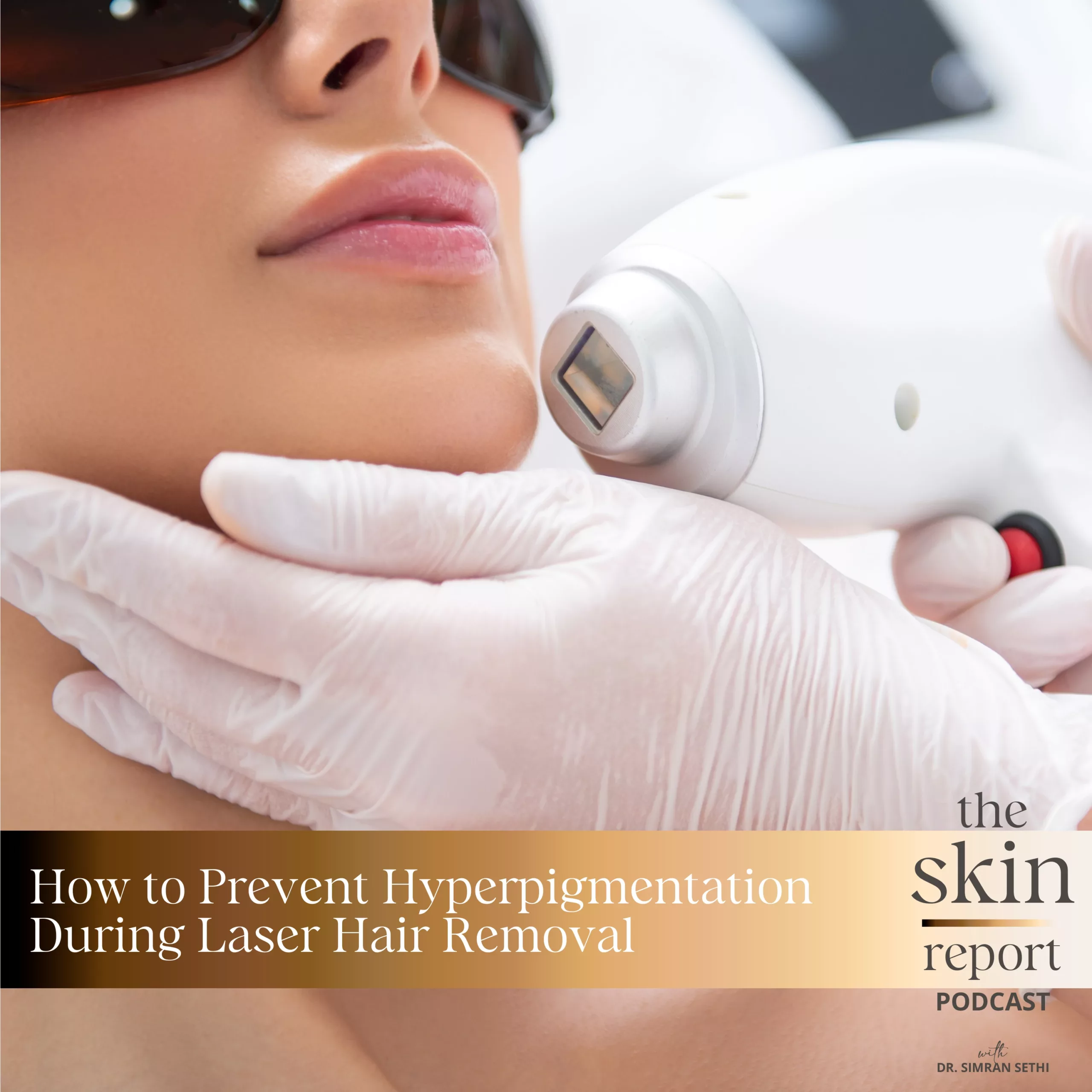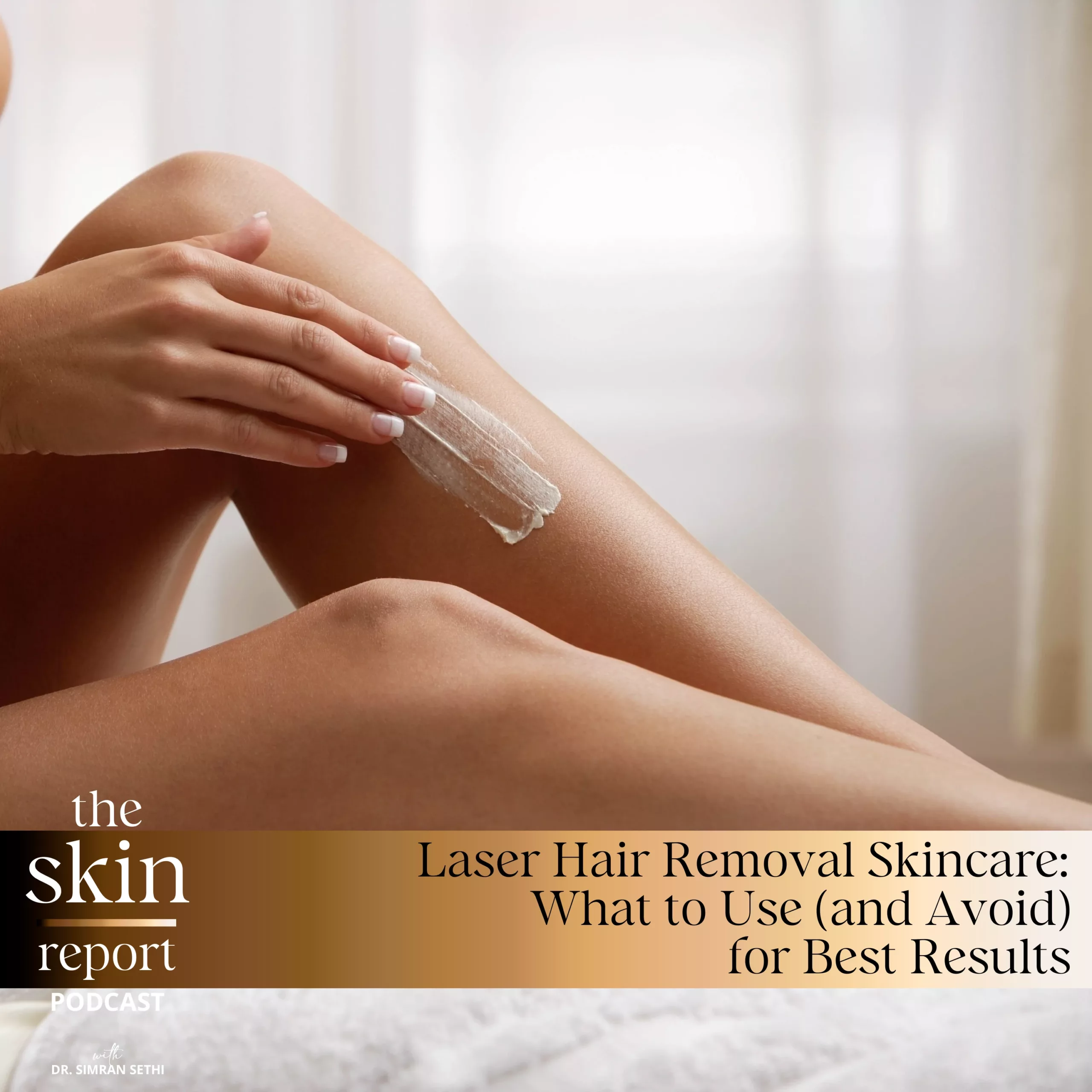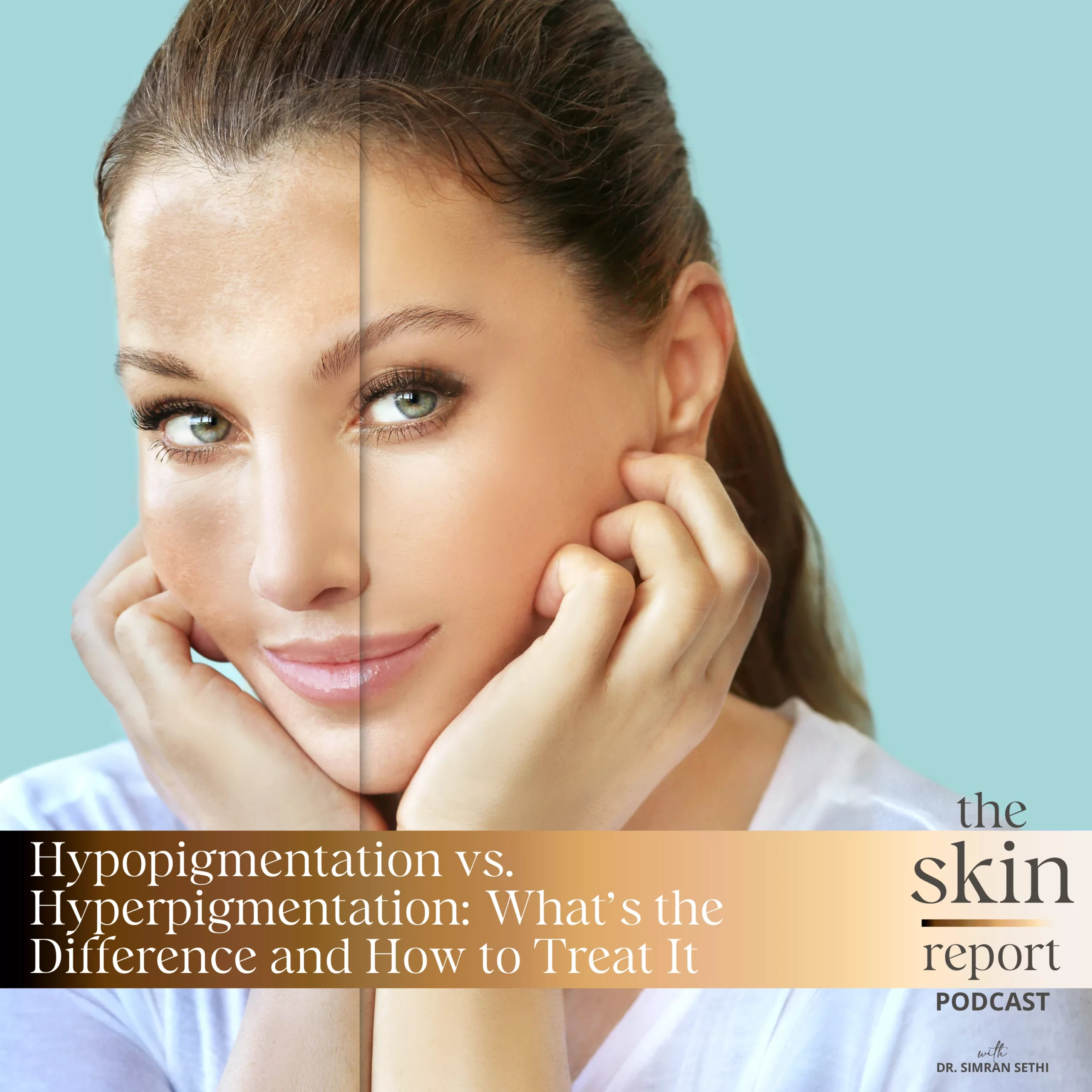Hair Loss During Menopause:
What Actually Helps & What to Avoid
In this episode of The SKIN Report, Dr. Simran Sethi takes a deep dive into a frustrating symptom many women face during perimenopause and menopause—hair loss.
She explains how hormonal changes affect hair growth, and more importantly, which treatments are proven to work. From oral supplements like Nutrafol and collagen, to advanced in-office treatments like PRP and microneedling, Dr. Sethi gives clear, science-backed advice on what helps—and what doesn’t. Plus, she sheds light on popular products like LED caps and biotin supplements that may not be worth the investment.
👉 Whether you’re just beginning menopause or in the middle of it, this episode offers clarity, confidence, and compassion for your hair health journey.
Exclusive Offer for the Skin Report Audience:
Use SKINREPORT20 in the shopping cart to receive 20% discount
LEARN MORE!
The Skin Report Podcast : Subscribe and Download!
Skin By Dr. Sethi – Blog
Skin By Dr. Sethi – Skincare
Skin By Dr. Sethi – Beauty Instagram
Dr. Sethi’s Medical Spa
Dr. Sethi’s Medical Spa – Instagram
Hello, everyone. I am Dr. Sethi and welcome to The Skin Report. We are going to talk about hair loss during perimenopause, menopause. What causes hair loss and what are some effective ways to reverse it? And also, what not to do to reverse hair loss, because there are a lot of things in the hair industry that do not work, and you really should not be spending time and money on. First, let’s talk about what causes hair loss with menopause or perimenopause. The perimenopausal and menopausal state can span over a course of 10 to 15 years. During this time, there is a reduction in the amount of estrogen and progesterone circulating in the body, primarily because of less production from the ovaries. And in relation to the estrogen and progesterone reduction, your testosterone levels will look a little higher. But interestingly, testosterone also declines in the menopausal transition.
A lot of women don’t realize that testosterone is a very important hormone in women. Of course, women don’t have nearly as much testosterone as men, but testosterone also plays a role in hair loss and hair growth. Now, the first question you probably have if you are thinking about perimenopausal or menopausal hair loss is can I supplement my body with estrogen and progesterone to reverse a lot of this hair loss. And the answer is yes, but there are women who cannot have hormone replacement therapy, which is supplementing your body with estrogen and progesterone as you’re going through menopause, because of conditions like breast cancer or uterine cancer.
So, this episode is probably even more important to recognize options for those women who cannot supplement with HRT or hormone replacement therapy. And if you can safely supplement with hormone replacement therapy, this episode is important, because even if you have replaced estrogen and progesterone, it is sometimes difficult to restore the hair thickness that you had when you have lost hair from even a short period with a deficiency in estrogen and progesterone. So, let’s start with the most effective ways that have been tested over time, have clinical evidence, and are safe to use in all women. First, let’s talk about an oral supplement called Nutrafol. Nutrafol is an oral supplement that has been clinically proven to increase hair growth in both men and women going through hormonal transitions.
Men don’t go through menopause, but they go through something called andropause when their testosterone levels are going down. And women, of course, are experiencing a reduction in estrogen, progesterone, and testosterone during their menopause transition. So, Nutrafol is a great oral supplement to consider. It is well-proven and in my opinion, probably the most effective oral supplement that we have in the US today. There are other supplements that are biotin supplements, that very often do not increase hair growth, but definitely promise hair growth. And if you feel that you should supplement yourself with biotin, even if you are taking Nutrafol, I would say that’s not necessary. Biotin deficiencies are exceedingly rare in the Western world. Our food is well-fortified for us not to have a biotin deficiency.
So, unless you have some sort of gastrointestinal absorption disorder that prevents you from absorbing trace minerals and vitamins effectively, you do not need biotin supplementation. The other oral supplement I would recommend when looking at reversing menopausal hair loss is collagen. Collagen powders can improve hair growth. And even if they don’t fully reverse hair loss, they do make your hair stronger. Interestingly, we don’t know the exact mechanism by which taking collagen or ingesting collagen improves hair growth and hair quality, but we do know it is effective at improving your hair’s growth, quality, and it also has the advantage of helping with skin and skin cell turnover, and also bones and joints. If you are going to supplement with collagen, make sure you’re using a collagen powder that you can put into any kind of beverage, because this has the best bioavailability.
I wouldn’t recommend collagen in the form of pills, because you have to ingest about 10 to 12 pills to get the right dose of collagen, which can be a little hard on your stomach over time. So, collagen powders are another great way to orally supplement yourself to help with hair growth. Outside of oral supplementation, the next group of treatments or hair growth options is actual medical-grade treatments that can be done at a medical spa. And this mostly is injections of plasma-rich platelets to the scalp. Plasma-rich platelets or PRP can be derived from your own blood and then put into your scalp to promote hair growth. Plasma-rich platelets are extracted from your own blood by drawing your blood, spinning it in a special centrifuge, and then extracting the gold straw-colored part of the blood. This plasma is rich in platelets and growth factors, which when injected or inserted into the scalp, will promote growth of the follicle and also improve the quality of your hair.
There are two ways of delivering PRP into the scalp. First is injecting it directly into the scalp in tiny injections that are spaced about half a centimeter apart, or you can microneedle the PRP into the scalp. In my practice, I like to microneedle PRP into the scalp because it has been shown in multiple studies to have better hair growth. And microneedling is substantially more comfortable than injections of PRP into the scalp. If you are considering PRP hair restoration, it is a great option. It is something that can be safely and easily delivered with microneedling. If you do want to try injections, it is something that is a lot more uncomfortable and actually, clinically, has not been shown to be superior to microneedling. Microneedling PRP into the scalp is a lot more effective in hair growth, and it’s something that both men and women can do.
Other treatments for hair loss that could be microneedled or injected directly into the scalp include exosomes and stem cells. Now, there has not been a study comparing the effects of hair growth with PRP versus exosomes, versus stem cells. And there are some studies that have looked at them independently and some meta-analyses, but let me give you my logic and what I’ve seen in clinical practice. When you are working with someone who is healthy, has a healthy lifestyle, exercises, they’re innately going to have a lot more growth factors circulating in their body. And their PRP is going to be a lot more effective at stimulating growth. And generally, if you are under the age of 60 with a healthy lifestyle, I would say your own PRP is going to be quite effective at promoting hair growth.
For people who don’t have a healthy lifestyle and primarily don’t exercise with strength training, their circulating levels of growth hormones are actually lower. And even if they are below the age of 60 and above the age of 40, in that scenario, I think exosomes are going to be more effective than PRP. If you’re working with someone who’s past the age of 60, likely their PRP might not be as effective in its ability to stimulate hair growth. Exosomes are a great option in this age group. Interestingly, PRP and exosomes cannot be injected together because they do sort of fight each other’s effects. So, if you have decided to get a treatment for hair loss that is going to involve microneedling or injections, you do have to make the decision with your provider on which one will be more effective, PRP or exosomes.
Stem cells are not readily available in the US for injection into the scalp. They may be available in other countries, but I’m not going to discuss them here because I personally have not had a lot of experience using stem cells for hair growth. Next, we’re going to discuss topical applications for hair loss. And in this group, the most popular treatment is Rogaine or minoxidil. Minoxidil is a medication that was initially developed for blood pressure reduction. But interestingly, users of oral minoxidil noticed that they had more hair growth, not only on their scalp, but their entire body. Over time, minoxidil has now been compounded to become a topical serum that can be applied to your scalp daily to promote hair growth.
Minoxidil can be found in two preparations. And I would recommend the 5% preparation, because then you only have to apply it once a day. Minoxidil is very effective at increasing hair growth in the area it’s applied in. But the only problem is as soon as you stop using minoxidil, it’s effects on your hair growth will go away. The other issue with minoxidil is texture. When you apply minoxidil on the scalp, it can irritate the scalp. And in many cases it also causes your hair to grow more coarsely. Many people don’t like that, because, of course, it affects the appearance and texture of their hair. And it is also something that you have to apply daily, which can be a little cumbersome.
Many ask, what is the difference between using minoxidil, and getting a PRP treatment and can you do them together? Well, the difference is PRP treatments are initially done in a series of four to six treatments to stimulate hair growth. And then that signal, that stimulation signal is pretty active for three to six months, so you can then go on a routine of doing a PRP treatment on your scalp every three to six months that will maintain results. Minoxidil, on the other hand, does not leave a lasting signal. It only works on your scalp as long as you are applying it. When you stop applying it, you will not have any long-term effects. The other problem is minoxidil can also leak onto other parts of your skin. And a lot of times there are people who experience hair growth in their forehead because their minoxidil has leaked onto the forehead.
So, minoxidil is very effective. You just have to make sure you’re applying it correctly and that you’re using it regularly to see positive effects on hair growth. Before we finish this episode, I want to talk about a few of the products on the market that promise hair growth, but are still questionable or don’t have enough clinical evidence to be worth the investment and time. The first one is LED masks. There are a lot of LED masks or caps that can be worn and promise hair growth. But unfortunately, I have not seen any clinical evidence that shows that they actually work or at least work in most users. They are also quite an investment and need to be worn almost daily, which is why it’s really important before you invest in one that you’ve at least looked at the data behind it.
The next group of products that is vastly marketed to people with hair loss is oral supplements. Oral supplementation can be very complex. And in the United States, oral supplements are not regulated by the FDA, which is why it’s even more important that if you are going to take an oral supplement for hair loss, you make sure that it’s actually effective. Nutrafol is an effective oral supplement for hair loss, so is collagen. I don’t know if any other oral supplements that have the results that Nutrafol and collagen give. And also, remember, your supplements have to be taken daily to show effect. So, if you are going to invest in an oral supplement for hair loss, make sure that it’s something that you can stick to for at least three to six months and that it has good, sound clinical data to back it.
Hair loss, especially hair loss during menopause, is a very big topic. And I’m sure I haven’t covered everything. If you have a question, please ask me in the comments. And if you haven’t done so already, please subscribe and turn on your notifications so you always know when we release a new episode.

